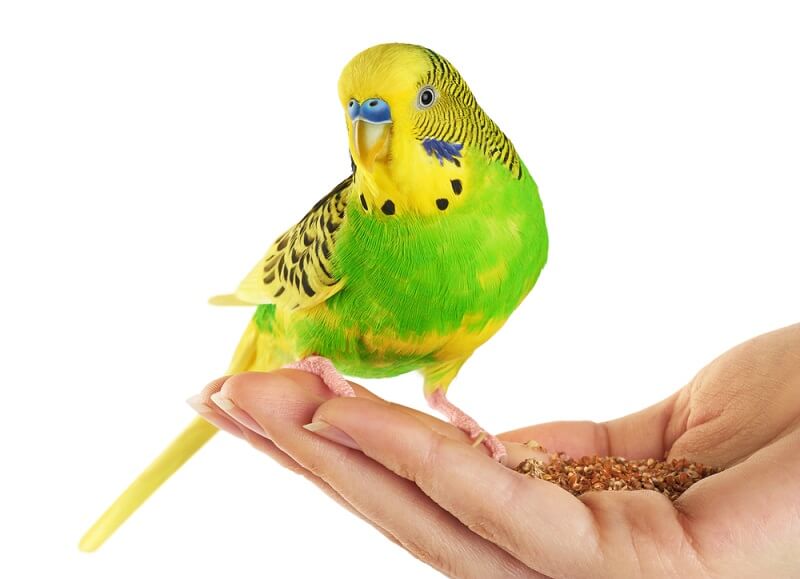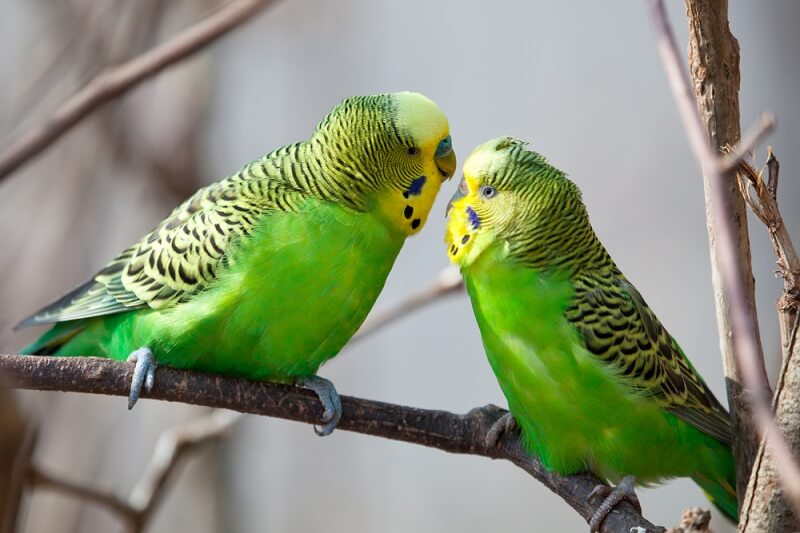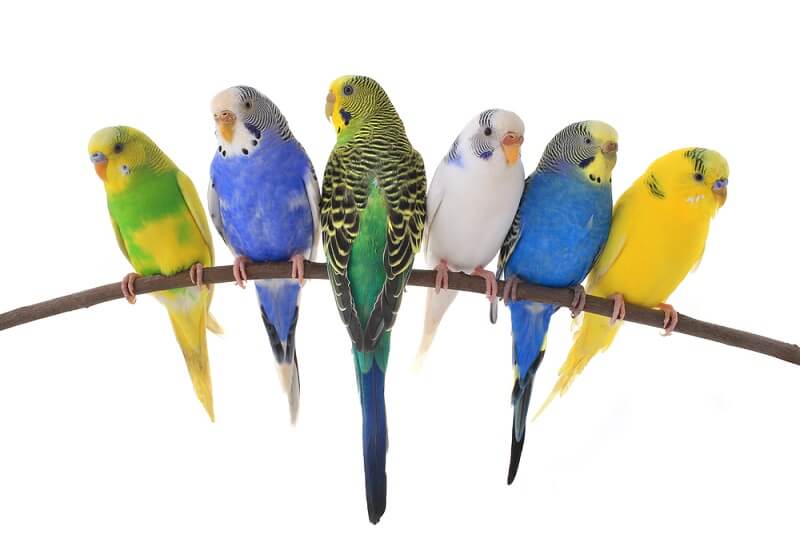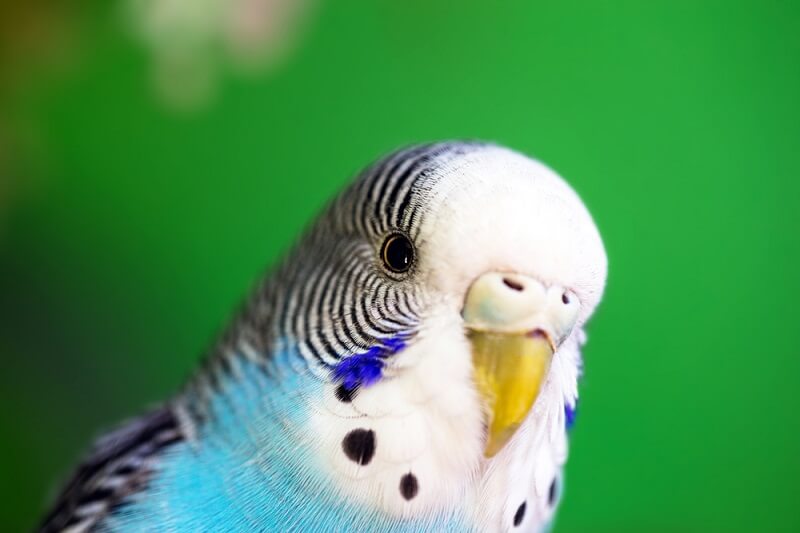
| Kingdom | Animalia |
| Phylum | Chordata |
| Class | Aves |
| Order | Psittaciformes |
| Family | Psittaculdiae |
| Genus | Melopsittacus |
| Species | Melopsittacus undulatus |
| Niche | Seed-eating Tree Dweller |
| Length | Around 7 in (18 cm) |
| Weight | Just over 1 oz (30-40 g) |
| Lifespan | Typically around 8 years, though some have reached 20 years |
| Social Structure | Flocks |
| Conservation Status | Least Concern |
| Preferred Habitat | Open scrubland, woodlands, grasslands |
| Average Clutch Size | 4-8 eggs |
| Main Prey Species | Grass seeds, nuts, seeds, corn, grains |
| Predators | Predatory birds, reptiles, mammals |
The Basics
The budgie (short for budgerigar) is a species of parrot native to Australia. The budgie is extremely intelligent and can learn to mimic human speech. In the wild, the species is incredibly social – forming flocks of hundreds of birds that feed and migrate together. In American English, the budgie is sometimes called the shell parakeet.
Budgies have adapted to some of the harshes parts of Australia that commonly experience drought and severe heat. As such, budgie flocks are constantly on the move. Aboriginal Australians used the birds for centuries as a way to navigate the harsh terrain and find new sources of food and water.

To tell the difference between males and females, you need to look at the cere – the small area surrounding the nostrils on the top of the beak. In males, this area will be a royal blue color, whereas female ceres are typically white or brown. While this shows a bit a sexual dimorphism, these birds are much less sexually dimorphic than many bird species – in which the males are very colorful and the females are dully colored and camouflaged.
Though budgies are native to Australia, they are now common pets across much of the world. Compared to cockatiels, budgies are much smarter and do not have a crest of feathers on top of their heads. Budgies are easy to keep as pets, have the ability to form social bonds with their owners, and can even mimic human speech!
Interesting Insights from the Budgie!
Many people keep budgies as pets because of their pleasant attitude and ability to mimic human speech. However, most people don’t know about the amazing biological concepts that make budgies such an incredible species!
Color Mutations
In the wild, budgies mainly show the green and yellow coloration seen in the images above. These colors are likely a product of complex selective forces ranging from sexual selection to predator evasion. While the striped pattern around the eyes is retained in many captive budgies, artificial selection has yielded many more color varieties.

These color variations – including blues, white, and combinations of all these colors – can be selected for in a captive population through the process of intentionally breeding different varieties. Unlike natural selection, artificial selection is not based on adaptability. Rather, it is based on the preferences of the breeder.
While these birds would likely not survive long in the wild due to the consistent forces selecting against them, they easily thrive in captivity. Thus, all the color varieties seen above (and many more!) can be found in pet stores around the world.
Vocal Mimicry
Budgies are among the most social species of birds that have been studied. Like parrots and other highly social birds, budgies use a complex array of vocalizations to communicate with their peers in the wild. In captivity, this behavior actually helps budgies adapt to the human social structure.
The most famous budgies (commonly found on YouTube) can repeat a variety of complex phrases. Owners have taught their budgies to mimic human speech ranging from simple words to complex phrases. Most often, this is accomplished through positive reinforcement. Owners talk to their birds, and when the birds try to respond they are rewarded with a treat. With lots of practice and treats, budgies can learn to repeat almost any phrase you want.
Social Structure
Part of the reason budgies adapt well to captivity is that they live in complex societies in nature. Large flocks of budgies have immensely complex social relationships. Not only do the birds show affection for one another, but they communicate to move the flock to new resources.
In a captive situation, this natural behavior helps budgies bond with their owners. Like other birds, budgies will imprint onto the first organism they see after hatching. If this is a human, budgies will be extremely close to the human that raises them. Even flocks of budgies in captivity can see their owner as “part of the flock” – and will not be alarmed or scared because of human presence.
That being said, budgies can also suffer depression if you leave them alone for too long. Because they are such social creatures, they suffer greatly when they are alone. In the wild, being alone would be the equivalent of a death sentence for a budgie. So, it is best to keep more than 1 budgie at a time so that your bird does not get lonely while you are away at work.

